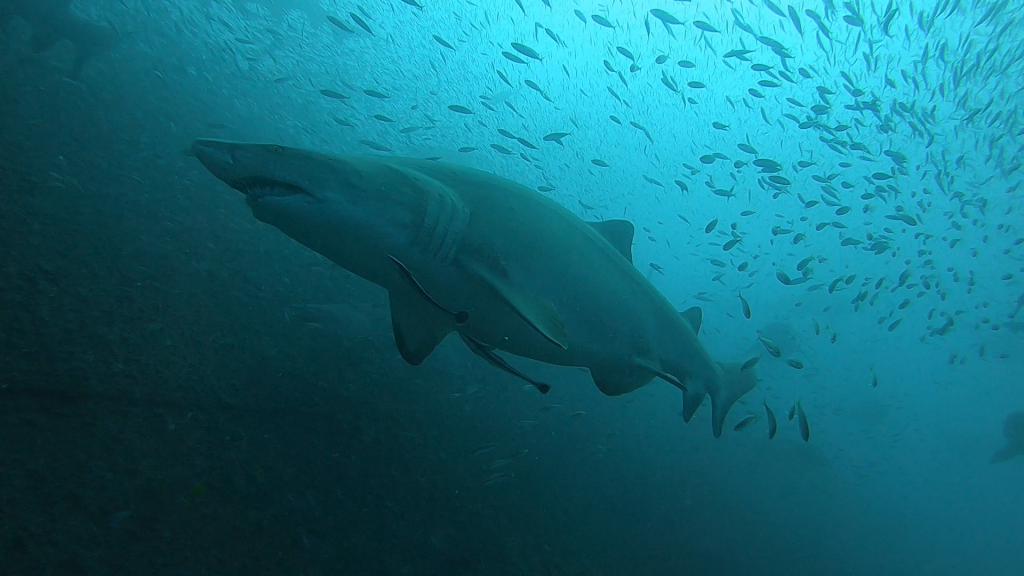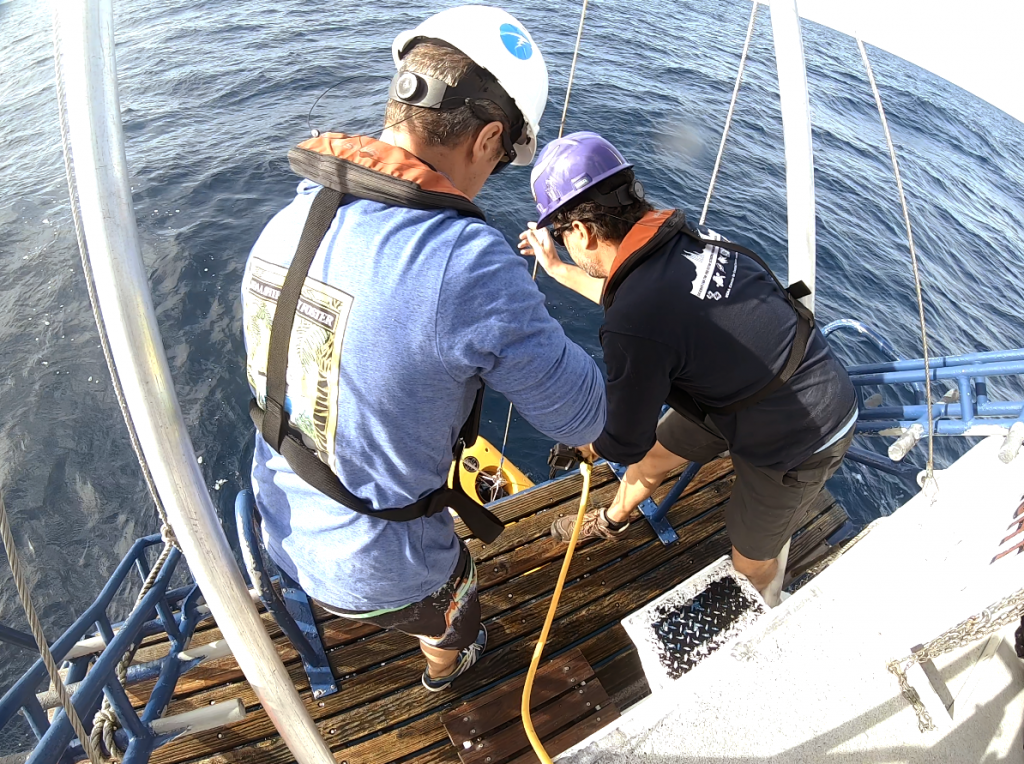
Hundreds of shipwrecks located off the coast of North Carolina, many of which sank during World War II, now serve as important habitat for diverse marine life. NCCOS scientists and partners recently returned from a mission using a remotely-operated vehicle (ROV) to survey the types of fish that live on six of these historic shipwrecks. The information gathered during this mission will help NOAA and partners ensure that these special places remain valued and healthy coastal resources.

In addition to documenting the fish communities living on the shipwrecks, the collaborative mission – in partnership with researchers from the North Carolina Aquariums and the South-East Zoo Alliance for Reproduction and Conservation (SEZARC) – aims to understand how large sharks, specifically sand tiger sharks, use the shipwrecks as habitat. The researchers are also hoping to learn how reef fish behave around these large sharks. Findings will help the team learn more about how shipwrecks support a diversity of fish ranging from smaller reef fish to large predators.
The ROV is outfitted with several high-resolution video cameras that provide information on the number and species of fish living among the shipwrecks. Researchers from the North Carolina Aquariums and SEZARC will also use the footage to identify individual sand tiger sharks using the unique spot patterns visible along their sides via a citizen-science program called Spot A Shark USA. These spot patterns act much like a human thumbprint, and can be used by scientists to track and study individual sand tiger sharks.
To learn more about the mission, visit:
- WUNC North Carolina Public Radio news story
- NPR All Things Considered: Tropical Fish Are No Longer Just In The Tropics As Climate Change Effects Habitats.
For more information, contact Chris Taylor or Avery Paxton.
